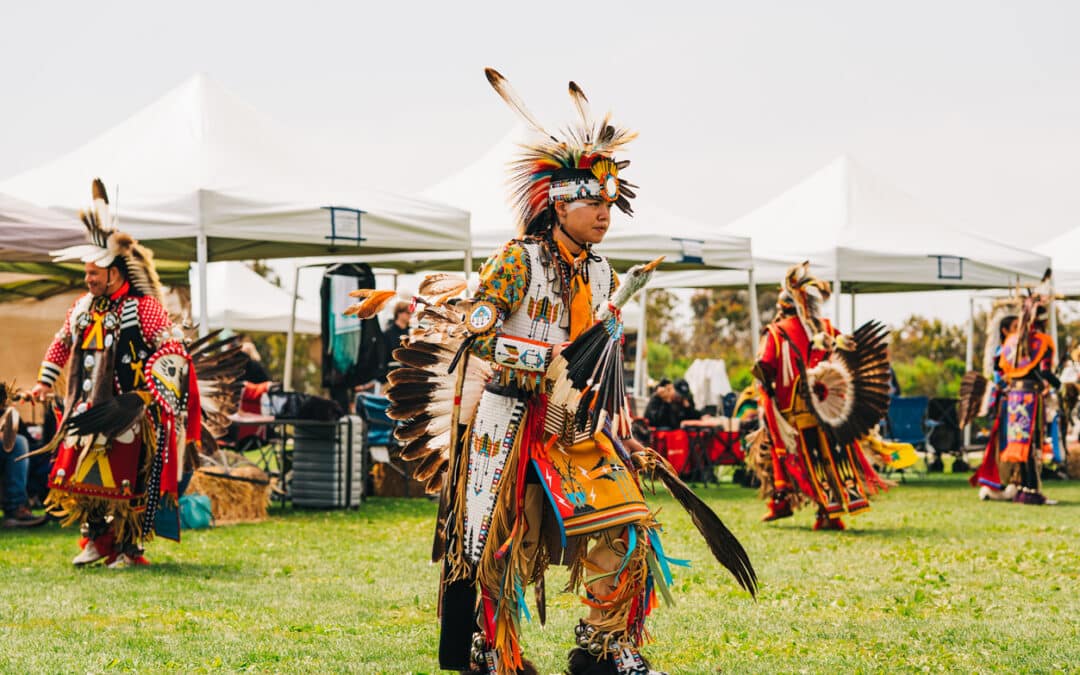It is well known and documented that Native Americans in tribal areas have some of the worst housing needs in the United States. The issue of safe and affordable housing for tribal members has been in a crisis state for decades, if not centuries.
According to a study from the Department of Housing and Urban Development (HUD), approximately 16% of Native populations live with overcrowding, compared with the national average of 2%. In Indian Country, it’s not uncommon to see 18 or more people living in a single 900 square-foot-house—a size typically meant to provide shelter for a family of four. Our indigenous values impel us to care for one another under the same roof, regardless of whether we have ample space. HUD has additionally found Indian Country faces a deficit of 68,000 housing units per year.
Additionally, data from the Home Mortgage Disclosure Act discloses that “Native Americans are disproportionately underrepresented in mortgage lending by a factor of three”. The article goes on to explain that the small number of Native Americans qualifying for a mortgage are forced to purchase a manufactured home rather than a site-built home. The costs associated with acquiring a mortgage on manufactured homes are higher than their counterparts—leading Native borrowers to purchase much more expensive homes.
Insufficient access to capital is a major underlying cause of the current housing crisis faced by many Native Americans. Native American families are also facing additional obstacles such as the lack of affordable homes, rising interest rates, competing with multiple offers, and increased down payment requirements as housing values continue to rise. Inventory is low and home values are at high values favoring the seller.
Many sellers will only entertain offers for conventional mortgage financing, making it increasingly challenging for Native Americans trying to utilize HUD 184, VA loans and/or USDA 502 mortgage financing. With the combination of high housing values and rising interest rates, it results in higher borrowing costs effectively pricing out many Native American homebuyers.
The Native Community Development Finance Institution (CDFI) movement is leading response to housing needs and mortgage products in Native communities. There are currently 66 Native CDFIs certified by the US Treasury. These Native CDFIs were established to be the economic development engines of their communities and are generally the only source of capital for advanced asset and wealth creation opportunities. Native CDFIs have amazing local level community impacts as they assist families own their first homes, create jobs and small businesses, support the creation of essential services through the development of community facilities, and empower individuals by building credit histories.
Native CDFIs have faced this housing crisis head-on within their communities providing affordable and safe housing lending products and extensive homebuyer readiness technical assistance, in turn propelling homeownership through the provision of mortgage lending opportunities for hundreds of tribal members across the United States. Within the loan portfolios of Oweesta’s current borrowers (excluding the Native owned banks in our portfolio) there exists over $36.6 million in 432 mortgage loans to Native families as of December 2022.
Unfortunately, there are limited options for Native CDFI’s providing mortgage lending to sell mortgage portfolios to the secondary housing market as many Native CDFIS have non-conforming mortgage products, trust land issues provide additional complexities in addition to Freddie Mac and Fannie Mae requiring MOUs with Tribe’s in their processes for engagement, which has shown limited and minimal successes, making selling mortgages to Freddie and Fannie essentially a non-starter. This has placed a significant strain on the ability to revolve housing lending capital and to meet the urgent housing needs of the target markets Native CDFI’s serve.
The growth and maturity of the Native CDFI industry has created a larger capital demand as Native CDFIs are managing larger portfolios and tribal communities and potential borrowers are more loan ready with the decades of development services and consumer loan products provided to their communities enabling the creation of stronger and loan ready borrowers.
Innovations to Address Native Communities Housing Needs
Constructing sustainable, long-term housing in Indian Country is an investment worth making. It is possible to repair, design, and construct homes Native families can take pride in for generations to come.
The South Dakota Homeownership Coalition has been a leader in advancing homeownership in their respective community. Through the 502 Relending Pilot, USDA Rural Development is partnering with Four Bands Community Fund and Mazaska Inc., both Native community development financial institutions and active Coalition members, to deploy a total of $2,000,000 to eligible Native American homebuyers located in tribal communities of South Dakota and North Dakota. According to USDA, the CDFIs’ deep ties in local communities will help them to reach homebuyers more effectively than other lenders.
CDFI Fund is looking to address greater infrastructure and housing needs within Native Communities by issuing The New market Tax Credit (NMTC) Native initiative. This program is the next step in broadening the on-ramp to the NMTC Program. The goal of the NMTC Native Initiative is to increase NMTC investments in Federal Indian Reservations, Off-Reservation Trust Lands, Hawaiian Home Lands, and Alaska Native Village Statistical Areas, collectively referred to as NMTC Native Areas.
Oweesta also has the capacity and ability to play a significant role in breaking down the barriers to home ownership to Native Americans by providing a secondary mortgage lending product for Native CDFIs. In partnership with Native American Bank (NAB), Oweesta proposes a new loan product, the Native CDFI Mortgage Portfolio Loan. This loan product is intended for Native CDFIs actively providing mortgage lending to their target markets and have the need to revolve their mortgage lending capital to continue to meet mortgage lending needs of the communities they serve. The intention of this loan is to revolve mortgage capital quicker and to serve as a bridge loan until such a time the packaged mortgage loans can be refinanced.
In the event the non-conforming mortgage loans never become eligible to sell on the secondary market, the Native CDFI can either buy back the principal balances at loan maturity or refinance. The mortgage portfolio loan program will provide numerous benefits to Native CDFI’s and the communities they serve. In addition to providing a mechanism to sell mortgages on the secondary market, it also provides additional access to affordable mortgage lending capital. This affordable capital will allow Native CDFIs to fund additional mortgages to Native Americans at below market rates. Native CDFIs will also utilize the capital from this program to leverage additional funds for mortgage lending and to support other lending products in their portfolio.
This additional lending capital will also increase loan production and increase earned revenue from interest and loan fees resulting in increased self-sufficiency. The growth in loan production and additional capital will also assist in strengthening the statement of financial position of the Native CDFIs participating in this loan product.
The CDFI Fund Native American CDFI Assistance (NACA) Program has been an imperative and essential program to uplift and provide the financial and technical assistance resources to enhance private sector development, create individual assets and promote community wealth building efforts across Native communities nationwide.
While Native CDFIs are changing the economic landscape of their communities with each class and loan provided, there are significant challenges currently facing Native CDFIs that could hinder the continued success and growth of these imperative institutions serving Native communities. The continued level of appropriations for set-aside of the NACA (Native American CDFI Assistance) Program has remained at $21.5 million for several years. Native CDFIs require increased appropriations to adequately meet their target market lending demand in addition to requiring the support to deliver culturally relevant training and technical assistance platforms to their Native communities. The low level of appropriations has resulted in the application process becoming extremely competitive, subsequently, smaller and emerging Native CDFIs are being continually unfunded.
The CDFI Fund has also revised their target strategies within their CDFI Fund application priorities that focuses on expanding target markets and the creation of new loan products, year after year. This is extremely concerning for smaller assets sized organizations, rural serving CDFIs and Native CDFIS. As these smaller organization have been the lifeline to safe and affordable financing products, their business operations do not entail expanding their target markets and adding new loan products on an annual basis.
With these two focal points given as a funding priority, many Native CDFI and rural CDFIs are opting not to apply to the CDFI Fund grant opportunities as the chance of a successful CDFI application is minimal with these new standards. This eventually will result in fewer CDFIs serving their communities and the growth of the CDFI industry only allowed for larger and national serving organizations.
The power of the CDFI industry has always focused on the grassroots organization ties these organization have with their communities, the purpose of the CDFI Fund was to act as a bridge to communities who were unbanked and had no access to the final mainstream, which is exactly what these organizations have been doing for two decades. I would urge for increased appropriations for the NACA Program to ensure that our Native serving institutions can continue their successful training and technical assistance endeavors and lending activities in their respective tribal communities.
In concluding my remarks, I want to emphasize that the CDFI Fund is not just another ‘program’ that needs more funding. It is a critical federal initiative that supports the development of credible institutions that build the private enterprise sector of reservation economies and provide leadership to the emerging nonprofit sector. CDFIs are a proven model and a worthwhile investment in the future of reservation economies. I urge you to support increased funding to prepare all Americans, and Native people particularly, for successful economic futures.
Chrystel Cornelius is president and CEO of Oweesta Corp., a Native CDFI Intermediary offering financial products and development services exclusively to Native CDFIs and Native communities. This article was adapted from written testimony delivered before a recent hearing of the U.S. Senate Subcommittee on Housing, Transportation and Community Development.















I am very pleased and encouraged to see this informative article by Chrystel Cornelius of Oweesta Corp.
I would definitely support increased appropriations as a start to adequately meet Native CDFIs target market lending demands and assist in providing additional support to deliver culturally relevant training and technical assistance platforms to their Native communities.
Even though out of my geographic area, we should all be kept aware of areas of oversight in home ownership.